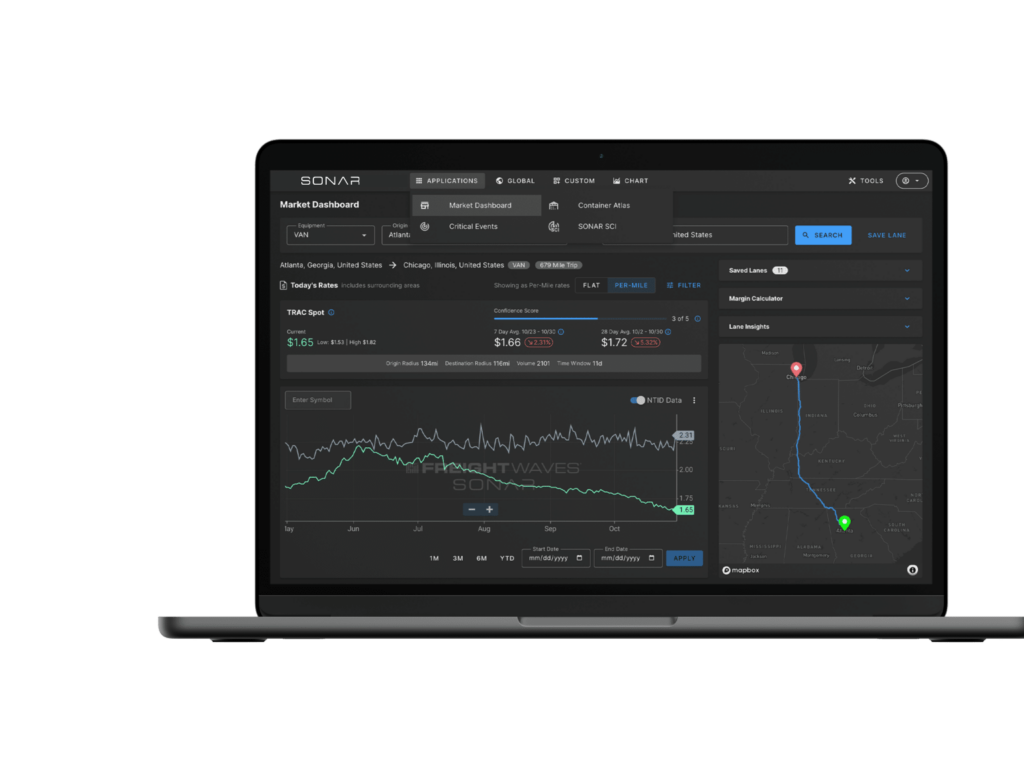The state of freight capacity depends on hundreds of factors. Increased consumer demands, changing government regulations, fears over public health crises, asset and driver availability, manufacturing output, and many other factors influence capacity. While there is no sure-fire way to see what capacity will be like in the future, the next-best action is to apply SONAR data and analysis to help you understand what might happen and how it will affect freight spend. For those unconvinced, think about how forecasting for freight capacity allows for proactive freight spend management in these ways.
HOW MUCH DO PAPER AND PACKAGING COMPANIES SPEND ON TRANSPORTATION?

Capacity remains a hot-button topic for all supply chains, and forecasting will be key to unlocking value
Capacity is an evergreen subject rife with opinions of freight experts and industry players. Regardless, the value of freight capacity planning is critical. When capacity is tight, rates are more competitive, but it comes at a price – great uncertainty. As noted by the Owner-Operator Independent Drivers Association (OOIDA) in a May letter to Congress, reported by FleetOwner Magazine, “Truckers who have helped keep the nation safe, healthy, and supplied, are now struggling mightily. Many small motor carriers and owner-operators are concerned their businesses will not survive the crisis. This long-time problem that has boiled over as a result of COVID-19 is the lack of transparency between brokers and motor carriers.” The lack of communication has been amplified because of the COVID-19 crisis. During this global pandemic that continues to expand, capacity quickly became too much capacity and resulted in blank sailings, empty backhauls and losses for drivers. In turn, it created supply chain shortages across the United States and the world – only deepening the problem. When a major disruption occurs, such as a Black Swan event, balances swing. For example, the balance between spot and contracted rates faltered. Supply chains have had to find available capacity without incurring added freight costs. Going forward, recognizing the current needs of capacity and future trends in trade lanes and demand will be key to ensuring the balance of spot and contracted rates remains optimized.
As further reported in a FreightWaves freight volumes post, “Freight volumes remained strong this week and remain well above both 2018 and 2019 levels. Capacity has taken a long time to react to these elevated volume levels. Tender rejections are finally reaching levels that may suggest upward pressure on rates.”
The use of data and analysis in the SONAR freight forecasting platform opens the door to new ways to manage spot and contracted rates. Think about it; what’s freight capacity forecasting really about? The answer is simple; it’s about keeping companies informed of whether their spot or contracted rates, as well as which lanes, and needs, will prove the most affordable and within service levels going forward.
Big data analytics power freight capacity modeling to overcome supply chain issues
Big data analytics leverage a comprehensive series of algorithms, including machine learning, artificial intelligence, and machine-to-machine connectivity, to enable proactive modeling that keeps results closer to the target and away from erroneous assumptions.
It’s similar to the method of travel modeling used by the U.S. Department of Transportation. As explained by the Federal Highway Administration, “Travel demand modeling provides forecasts of the number of trips occurring on the transportation system. This determines the universe of trips that might benefit from a specific improvement.”
Rapidly changing customer behaviors continue to reshape industry expectations
Changing consumer behaviors include a sudden surge in e-commerce and the need for essentials that rivals past runs on banks and grocery stores. The demand for more continues to grow, and as consumers grow accustomed to shopping for everything from home, the demand will reach a breaking point. Brick-and-mortar locations have a dual role to play. Those fulfilling local orders for delivery must share their data to allow for better freight forecasting. However, that’s a heavy order. Instead of trying to micromanage things, supply chains need to know how the summation of these buying habits translates into freight capacity growth or contraction.
Driver uncertainty continues to affect capacity
As reported by James Jaillet via CCJ Digital, “Total employment in the for-hire trucking industry rose by 8,100 jobs in the month, according to the Department of Labor’s preliminary Employment Situation Report for June. That builds on May’s gains of 2,000, which followed a massive loss in April – 92,000 jobs on a seasonally adjusted basis, according to the DOL.” With that in mind, as driver employment increases, there may be an uptick in available capacity, but that is why it is critical that shippers, 3PLs, brokers and carriers understand the freight data that shows available capacity by lane. SONAR’s Outbound Tender Rejection Index (OTRI) is an excellent tool for this. The higher the OTRI rate, the less available capacity. Instead of relying on publicly available statistics or those from others in the industry (which are out-of-date and not as granular as the data in SONAR), subscribers have access to near-time data in SONAR. Subscribers can access the information and signals about freight capacity forecasting by using SONAR before booking every load.
Plan for today’s, tomorrow’s, next month’s, and next year’s volume with the right freight capacity forecasting solution
Freight capacity is always subject to change. That much is certain. Those responsible for supply chains need to recognize that the only way forward to keep freight spend under control is to see what might happen and plan accordingly. It’s really that simple. Request a SONAR demo today to get started with your personalized forecasting capabilities.








